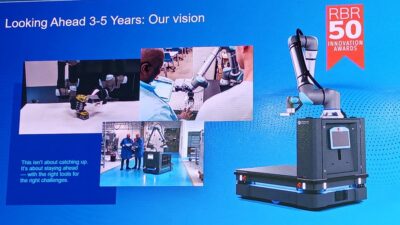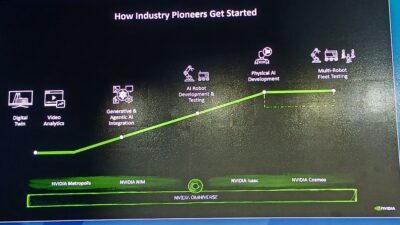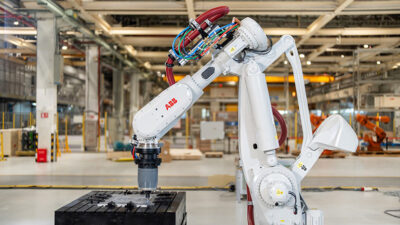The Worcester Polytechnic Institute’s humanoid robot placed seventh at the Defense Advanced Research Projects Agency (DARPA) Robotics Challenge Trials in Homestead, Fla.
The Worcester Polytechnic Institute’s (WPI) Atlas Robot for Nonconventional Emergency Response (WARNER) competed against 16 robotics teams from around the world. The robotics challenge was inspired by the nuclear disaster in Fukushima, Japan, in March 2011, which created an environment that was too hazardous for people to enter. As a response to that event, each team in the competition developed humanoid robots that could help respond to man-made and natural disasters.
The robots were charged with completing eight specific autonomous and semi-autonomous tasks ranging from clearing debris to climbing a ladder. Teams were awarded a maximum of four points for each task for a total potential of 32 points. The institute’s team earned 11 points.
WARNER, which stood at 6 ft 2 in. and weighed 330 lb, drove a Polaris Ranger XP 900 the distance of 250 ft in 6 minutes—faster than any other team. As a result, the institute’s team received the “Best in Task Vehicle Award” during the awards ceremony following the event.
“The driving task was one of the most demanding from a testing standpoint, and our team really did an outstanding job,” said Matt DeDonato, the team leader. “We couldn’t be happier for the effort the team put forth on that task and throughout the competition.”
DeDonato attributed the driving to strong testing and simulation during the earlier Virtual Robotics Challenge. The driving task was considered key as first responders need to program robots to first get to a disaster scene before they embark on other tasks.
Gill Pratt, a Dynamics Research Corporation program manager, said the government will now enter into contract negotiations with the top eight teams to fund them for next year’s DARPA Robotics Finals in December 2014. “Assuming those contract negotiations are successful and funds are available, those would be the eight that move forward,” Pratt said.
In addition to the driving challenge, WARNER participated in two additional mobility tasks, earning two points for climbing a ladder and two points for traversing terrain covered with cinder blocks.
Finishing in first place, the Japan-based SCHAFT earned 27 points, followed by IHMC Robotics with 20 points, Tartan Rescue with 18 points, MIT with 16 points, RoboSimian with 14 points, and Team TRACLabs with 11 points. Although WPI tied with Team TRACLabs, the WPI squad finished one place after them because WARNER required more human interventions during the tasks.
– Edited by Jessica DuBois-Maahs, Associate Content Manager
See other Control Engineering robotics coverage.



